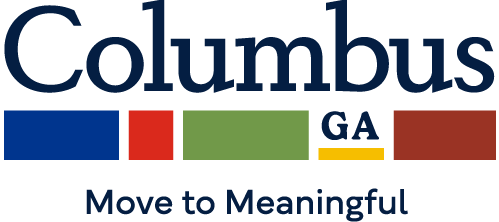Application Developer - G124 - GIS

Columbus Consolidated Government
Software Engineering
Posted on Mar 25, 2025
Major Duties and Responsibilities
-
This position designs, develops, and maintains intranet, website, and web-based applications and ensures software solutions are implemented in an efficient manner and the satisfaction of users by providing exceptional application technical support, researching issues, and problem-solving.
- Develop an in-depth knowledge of the company’s application portfolio, development tools, and development procedures.
- Maintains existing applications to include creating reports, system modifications, and troubleshooting system problems.
- Consult with users to evaluate new or modified applications to determine feasibility, cost, time required, compatibility with current systems and processes, and system capabilities.
- Assists other developers and programmers with application design and troubleshooting.
- Review manuals, periodicals, technical reports, and other resources to learn ways to develop applications that meet user needs to streamline government processes.
- Trains users to use new applications; provides technical assistance for application questions or problems.
- Produces technical documentation that accurately and thoroughly depicts the software design and code base to sufficiently assist QA testing and production support activities.
- Researches resources and methods (e.g. journals, literature, vendor information, etc.) for the purpose of maintaining current working knowledge of new and emerging technologies as well as district/state/federal rules, regulations, and policies for the purpose of architecting, delivering and maintaining a reliable and stable technology infrastructure appropriate to support the core mission of the city.
- Performs adequate unit testing of own and other developers’ application development work.
- Provides updates to appropriate leadership on work in progress, work completed, work planned, and issues potentially impacting the on-time completion or quality level of work.
- May be required to participate in after-hours on-call rotation.
- Serves as a member of cross-unit project teams for the purpose of implementing city and departmental initiatives.
- Works with the GIS Coordinator for the vision of the GIS Division in accordance with the Departmental Vision, Goals, and Objectives.
- Assists with the GIS databases, network, and applications.
- Has knowledge of the hardware and software used in GIS applications.
- Skilled in the analysis of GIS data and in the creation of GIS-related reports.
- Performs other related job duties as assigned.
Knowledge, Skills and Abilities
-
- Knowledge of GIS technology and itsapplications.
- Knowledge of computer trends and new technology.
- Knowledge of database platform SQL Server or Oracle or Microsoft SharePoint.
- Knowledge of Personal Computer file systems and typing skills.
- Knowledge across several browsers including Internet Explorer, Chrome, and Firefox.
- Knowledge of computer trends and new technology.
- Skill in organizing work, setting priorities, meeting critical deadlines, and following up assignments with a minimum of direction.
- Skill using Microsoft Office.
- Skill in interpersonal relations.
- Skill in oral and written communication.
Minimum Educational and Training Requirements
Physical Requirements
-
The work is typically performed while sitting at a desk or table with intermittent standing or walking. The employee may occasionally lift light or heavy objects, use tools or equipment requiring a high degree of dexterity, or distinguish between shades of color. Additionally, the following physical abilities are required:
- Balancing – maintain equilibrium to prevent falling while walking, standing, or crouching.
- Crawling – moving about on hands, knees, or hands, feet.
- Crouching – bending body forward by bending leg, spine.
- Feeling – perceiving attributes of objects by touch with skin, fingertips.
- Grasping – applying pressure to object with fingers, palm.
- Handling – picking, holding, or working with whole hand.
- Hearing 1 – perceiving sounds at normal speaking levels, receive information.
- Hearing 2 – receive detailed information, make discrimination in sound.
- Kneeling – bending legs at knee to come to rest at knees.
- Lifting – raising objects from lower to higher position, moving objects side to side, using upper extremities, back.
- Manual Dexterity – picking, pinching, typing, working with fingers rather than hand.
- Mental Acuity – ability to make rational decisions through sound logic, deductive reasoning.
- Reaching – extending hands or arms in any direction.
- Repetitive Motion – substantial movements of wrists, hands, fingers.
- Speaking – expressing ideas with spoken word, convey detailed, important instructions accurately, concisely.
- Standing – for sustained periods of time.
- Stooping – bending body downward, forward at waist, with full motion of lower extremities and back.
- Talking 1- expressing ideas by spoken word.
- Visual Acuity 1 - prepare, analyze data, transcribing, computer terminal, extensive reading.
- Visual Acuity 2 - color, depth perception, field of vision.
- Visual Acuity 3 - determine accuracy, neatness, observe facilities/structures.
- Walking - on foot to accomplish tasks, long distances, or site to site.


